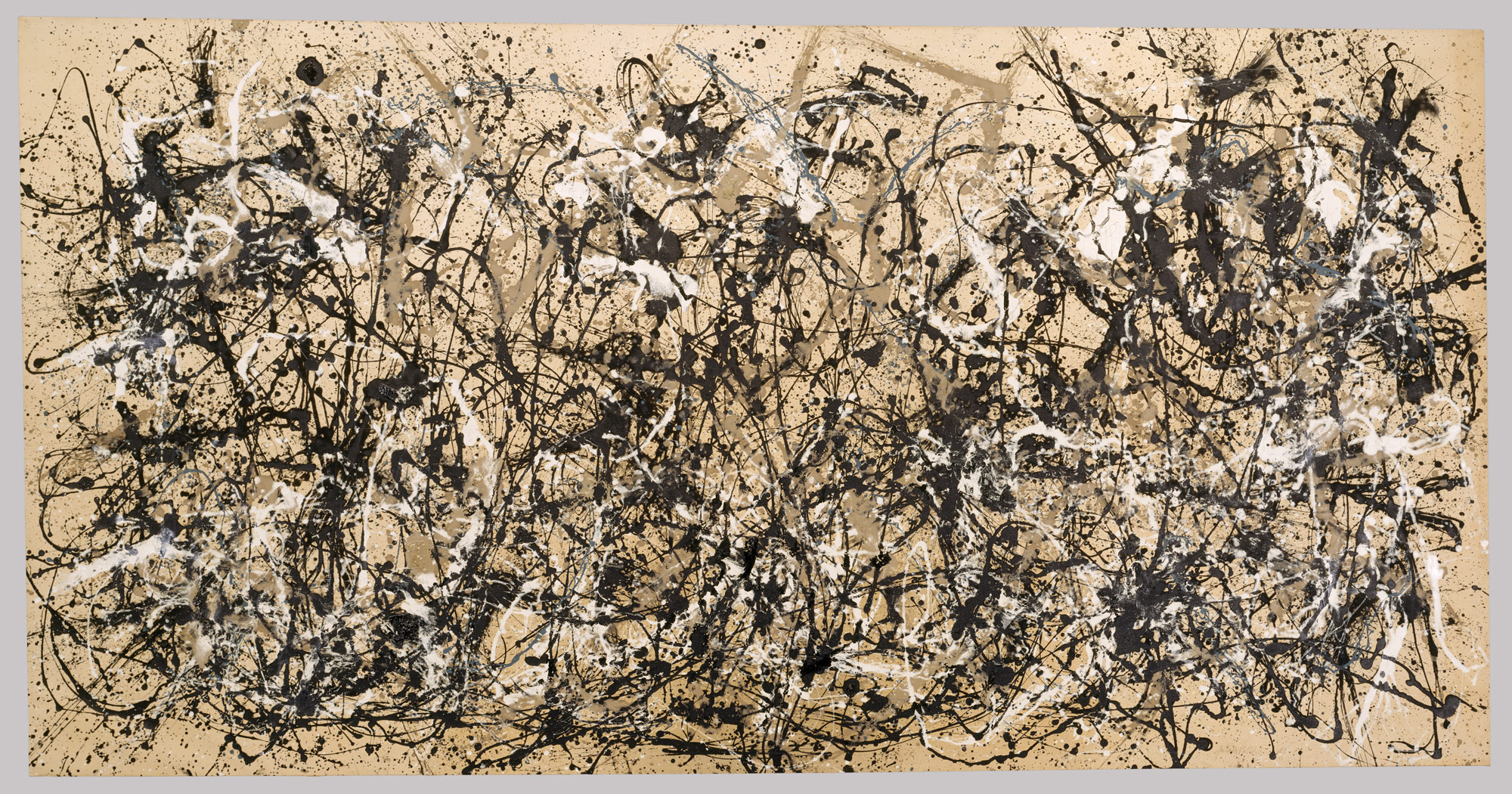The Project
Diving into Pollock is a virtual reality project where museum visitors can immerse themselves in Jackson Pollock's Autumn Rhythm (Number 30)
Showcase:Metropolitan Museum of Art Digital Media Lab Expo
Date:2014
Role:Designer, Developer
Skills:C#, Unity, Maya
At the Digital Media Lab at the Metropolitan Museum of Art, we are tasked to experiment with how technology can be utilized within the museum. For this project, I explored how to enhance a visitor's experience and understanding of modern art in a way unique to virtual reality. Specifically, I chose to work with Autumn Rhythm (Number 30) by Jackson Pollock.
Why Jackson Pollock?
Jackson Pollock was an Abstract Expressionist painter in the 1950's, famous for his large-scale splatter paintings. Abstract expressionists were fascinated with the concept of the sublime, creating enormous paintings to evoke strong emotions from the viewer. Their large canvases engulfed the viewer's vision, immersing them in colors, lines, and gestures.
The Abstract Expressionists were incredibly influential and avant-garde for their time. However, the scale of their paintings is no longer as astonishing as they originally were when first unveiled in the 1950's. In addition, an essential part of the experience of viewing Abstract Expressionist paintings is inspecting it from different distances. A Pollock looks and feels drastically different 10 feet away verses 10 inches away. Unfortunately, the essence of immersion is lost to some visitors.
I wanted to recapture the Abstract Expressionist spirit of immersion using emerging technology -- naturally, virtual reality seemed like an appropriate solution.
Virtual reality in museums
Using virtual reality to display museum collections is not a new concept. While this technology has been aimed particularly at the gaming industry, educational institutions have been experimenting with it as well. For example, Europeana created the EUseum, placing objects from the Rijksmuseum in a fantasy space.
However, I wanted to move beyond literally placing museum objects in a virtual museum space. I wanted to use virtual reality in a meaningful way. What makes Diving into Pollock different is that it creates an immersive experience for people to interact with modern art in a non-literal, yet educational way. By "diving into" a recreated Pollock, users can examine the layers and forms that Pollock used to create the painting.
The Process
I chose to recreate a small area on the left side of Autumn Rhythm. Working visually, I first separated out the larger paint splatters that I intended to model in Photoshop so that I could focus on creating the specific shapes in Maya. Each splatter was 3D modeled individually and imported into the game engine Unity. The user can move through the different layers of the Pollock, exploring the depth and size of the paint in relation to each other.


Conclusion
Ultimately, my focus with the project is to prompt viewers to examine the art differently and come out with a greater understanding of the artist's process and intent. I would love to be able to expand this project in the future and experiment with other artworks. In particular, I am fascinated by the challenge of teaching visitors with no art history background how to view, question and interpret modern art purely through a visual experience. How different would the intricate dots of a Seurat feel in a 3D space? How would you construct the rigidity of a Kandinsky? Could you recreate the dizzyingly dynamic feel of a Severini?
This project was built over the course of two months and culminated with a presentation and demonstration to staff and visitors at the Met.




